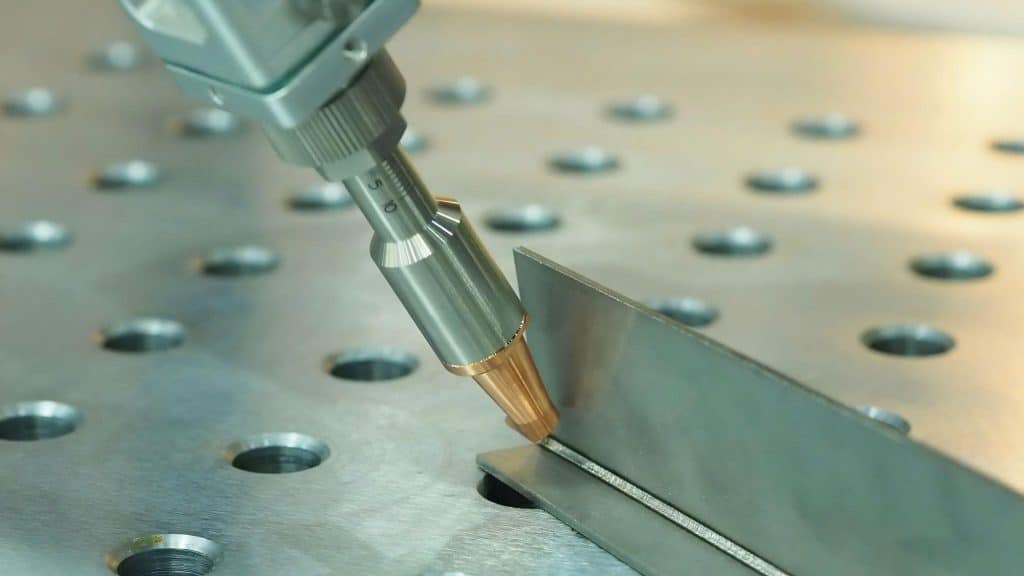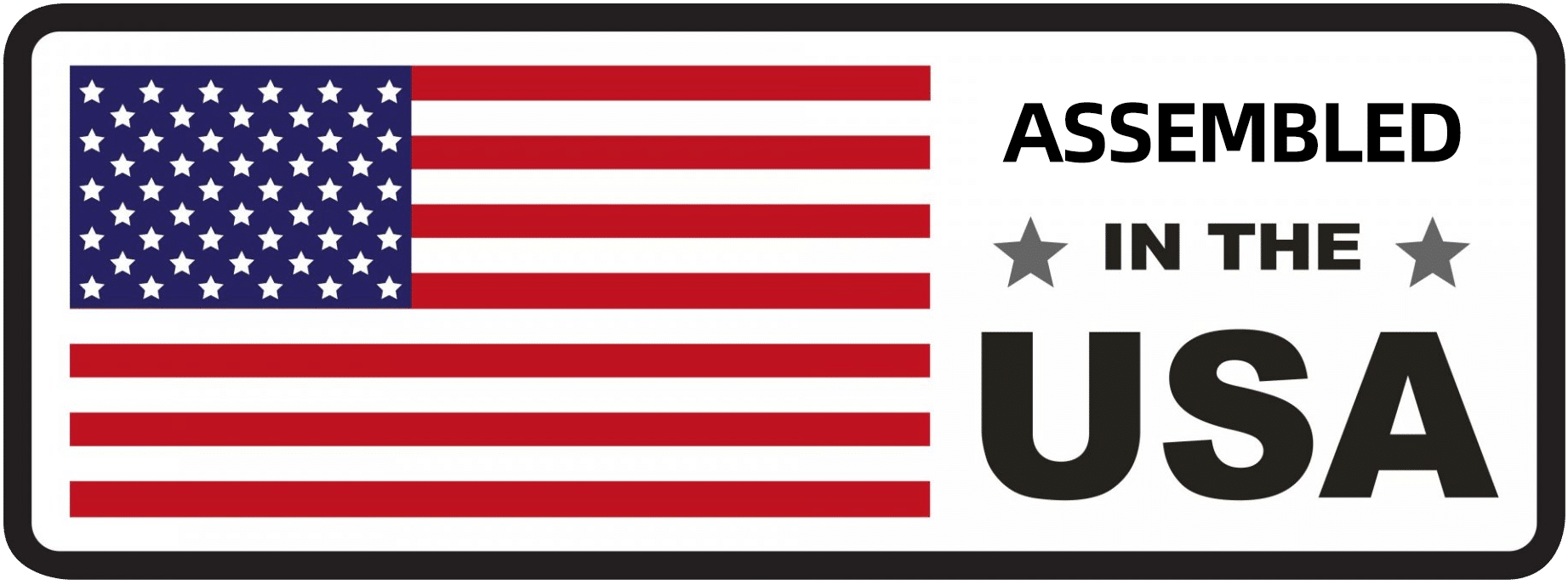
Traditional welding methods, such as arc welding and gas welding, have been in use for decades.
However, these methods struggle to keep pace with shifting market demands. Firms are now striving to produce higher-quality and innovative products with complex and intricate parts.
Enter laser welding – a cutting-edge method with advanced capabilities that traditional methods lack. It offers top-notch precision and minimal material distortion that suits the production requirements of modern manufacturers.
But how does laser welding compare to old-school methods? In this article, we provide a thorough analysis of laser welding versus traditional welding, examining their respective precision, speed, effectiveness, and cost.
Laser Welding Vs. Traditional Welding
Laser welding is an advanced welding method that utilizes a high-power laser beam for melting and fusing metals. The laser precisely heats a spot on the workpiece, ensuring deep penetration while maintaining a minimal heat-affected zone (HAZ). Hence, laser-welded joints are usually cleaner and stronger than other joints.
Meanwhile, “traditional welding” is an umbrella term for welding techniques used before the emergence of laser welding. These methods can be classified into:
- Arc welding: This process uses an electric arc to heat and fuse metal pieces. Some examples are MIG (Metal Inert Gas), TIG (Tungsten Inert Gas), and Shielded Metal Arc Welding.
- Gas Welding: Relies on the flame produced by gas combustion to heat the workpieces. Oxy-Acetylene welding is a common example of gas welding.
- Resistance Welding: Applies pressure and electric resistance to clamp and fuse metal pieces. Some examples are spot welding (also known as RSW or resistance spot welding) and seam welding.
Between the two, laser welding is considerably more precise. It can target narrow and hard-to-reach areas with pinpoint accuracy. For this reason, it applies heat efficiently to the workpieces, which results in smaller HAZ and minimal thermal distortion.
Meanwhile, both methods are versatile. They can join various material types and support both thin and thick metals. The only caveat with the traditional methods is their larger HAZ which can lead to cracks, dents, and other metallurgical damages to the weld joints.
Here is a quick overview of the fundamental properties of laser welding and traditional welding.
Aspect | Laser Welding | Traditional Welding |
Heat Source | High-powered laser beam | Depends on the specific technique (it can be electrical current from high-amperage electrodes or gas flames) |
Precision | Extremely high; laser welding can reach <0.1 mm spots. This makes it suitable for applications that require micro welds of finer details or complex geometries. | Moderate to low; the operator must be highly proficient to achieve pinpoint accuracy in traditional welding. |
Material Thickness | Excellent penetration on both thin and thick materials. | Generally performs well in thin materials (except for stick welding because of its high risk of burn-through). Moderate penetration on thick structural welds. |
Speed | Extremely Fast; | Moderate to slow; |
Heat Affected Zone | Small HAZ | Large HAZ |
Setup Complexity | Quick prep time. Most handheld laser welders have pre-set parameters for rapid application. | Moderate prep time. For instance, the operator must select the correct electrode/filler and manually adjust the amperage and voltage. |
Cost | High initial cost, but drives down operating cost over time due to high-speed production time. | Moderate to high initial cost. Machines and accessory equipment are often high-maintenance which add up to the cost. |
Compared to the old-school methods, laser welding solutions offer top-notch precision, material versatility, and high-level efficiency that is suitable for high-volume production lines.
A cutting-edge machine is necessary to achieve the full potential of laser welding technology. For instance, DenaliWeld CR Series is engineered to outperform traditional welding methods with its:
- 3000W continuous laser output (for precise high-power beam application)
- Consistent performance in various conditions ranging from -10°C to 40°C (14°F to 104°F)
- Modular chiller system for optimal cooling and minimal downtime
- Lightweight and compact profile for portability and ease of use.
- Cobotor robotic welding with a single click using DENALIWELD ROBOX™ (for automated precision welding)
Applications of Laser and Traditional Welding

In this section, we visit common industries where laser and traditional welding methods excel.
Electronics
Traditional welding has been a staple in fusing larger electronic components or preparing metal housings of several electronic devices. It performs poorly in microelectronic components because it is difficult to control and has low-level precision.
Meanwhile, due to laser welding’s minimal thermal impact, it is widely applied in the production of microelectronic components, battery tabs, sensors, and fiber optics. Its non-contact nature ensures limited exposure to contaminants of delicate electronic parts.
Automotive
MIG welding is one of the most common methods for constructing automotive chassis and frames, as well as for performing structural repairs. Manufacturers usually rely on MIG and other traditional methods to weld thicker vehicular parts.
As modern cars shift towards the use of thin sheets for weight, drag reduction, fuel efficiency, and safety innovations, many manufacturers have adopted laser welding due to its minimal heat-affected zone (HAZ) and high-level precision. This method also prevents warping in the vehicle’s lightweight panels, which ensures dimensional accuracy and structural integrity throughout the vehicle’s bodywork.
Medical Device and Equipment
Between the two, laser welding is more advantageous in the production of medical equipment. The ultra-precise capability of laser welding enables the production of sterile medical tools, miniaturized implants, and complex thin-walled tubing in some equipment. Furthermore, laser welding supports hermetic sealing and produces ultra-fine welds, ensuring the equipment’s safety and compliance with regulatory standards.
General Fabrication
Both methods are highly reliable in metalwork.
MIG, TIG, and spot welding are commonly used in the production of home and office furniture, HVAC systems and components, and decorative metalwork. However, laser welding eventually became prominent because it supports cleaner seams and intricate geometries. Most metalworks with fine and complex specifications, such as hydraulic systems, micrometer fabrications, and fine jewelry, rely on laser welding.
Frequently Asked Questions
1. What are the main differences between laser welding and traditional welding?
The main difference between laser welding and traditional welding is in their heat source. From the name itself, it is a highly concentrated laser beam that melts and joins metals in laser welding, whereas traditional welding can use electric current or gas flames.
2. Which welding method is more cost-effective in the long run?
Laser welding is more cost-effective in the long run despite its higher initial cost. This method can melt workpieces at an impressive rate of 1 to 20 meters per minute (m/min), which results in a quicker turnaround time and higher output volume. Higher production speed promotes power efficiency, leading to lower operating expenses in the long run.
3. Can laser welding replace traditional welding in all industries?
It is possible that laser welding will become the standard in every industry. It is faster, safer, more precise, easier to use, and creates smaller hazardous areas (HAZ) compared to traditional methods. As this technology becomes more affordable to the public, it might possibly replace traditional welding in the near future.
4. What safety precautions are necessary for laser welding compared to traditional welding?
Since laser welding involves high-intensity and high-temperature beams, operators must use specialized glasses and personal protective equipment as a safeguard from sparks, fumes, and radiation.
5. How do I know which welding method is best for my project?
Consider these aspects of your project:
- Thickness of materials involved: Choose laser welding for thicker materials. Otherwise, tradition might suffice.
- Precision needs: If your project involves irregular forms and geometries, laser welding is more suitable because of its high precision.
- Production volume: Both methods can support high production lines. But for one-time projects, you can stick with a traditional technique.
- Budget: Traditional has a lower initial cost, but comes with various maintenance requirements that incur costs in the long run. Laser welding tends to be more cost-effective due to its production benefits, despite its high initial investment requirement.
Laser Welding vs. Traditional Welding: The Final Verdict
Laser welding excels in projects where precision, speed, and clean results matter. It generates a minimal heat-affected zone that keeps your metals’ metallurgical integrity. Traditional methods, on the one hand, remain reliable for high-output projects, especially when the firm is on a budget.
We laid out the respective strengths of both methods, and the choice is yours.
If you opt for laser welding over traditional methods, ensure you invest in a high-quality machine for optimal results. Denaliweld is a global manufacturer of leading-edge laser welding solutions across the United States, Asia, and Europe. All Denaliweld machines are CE/SGS/WPQR-certified and engineered with advanced control systems for precise application, energy efficiency, safe use, and optimal output.
Visit Denaliweld and select from our extensive range of laser welding solutions.



